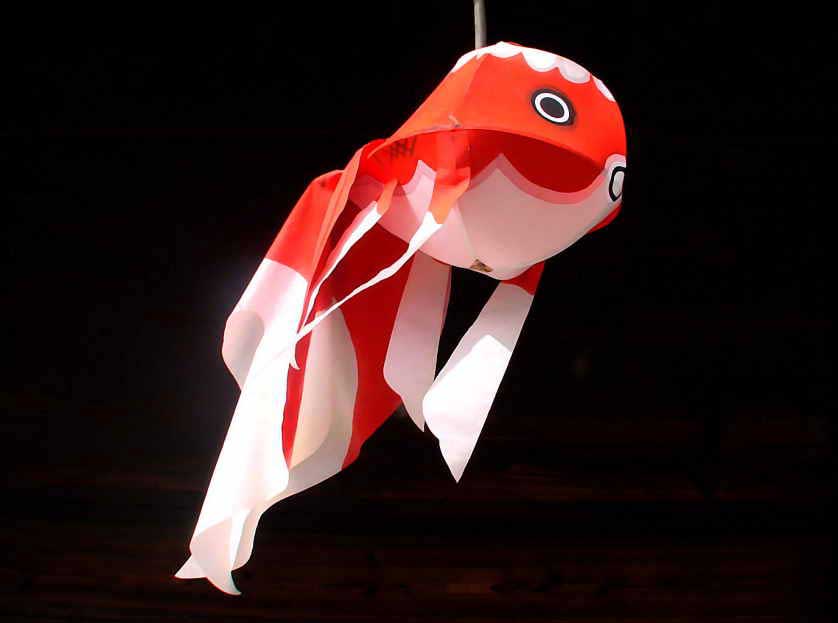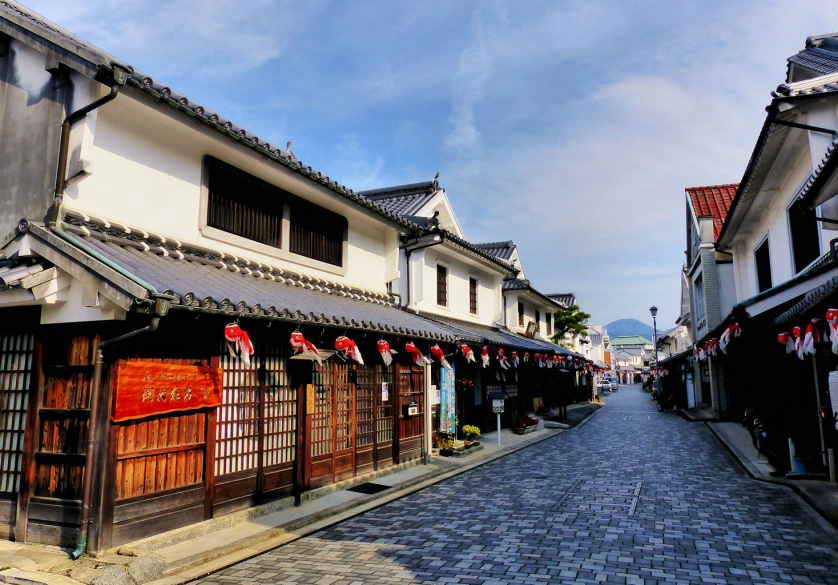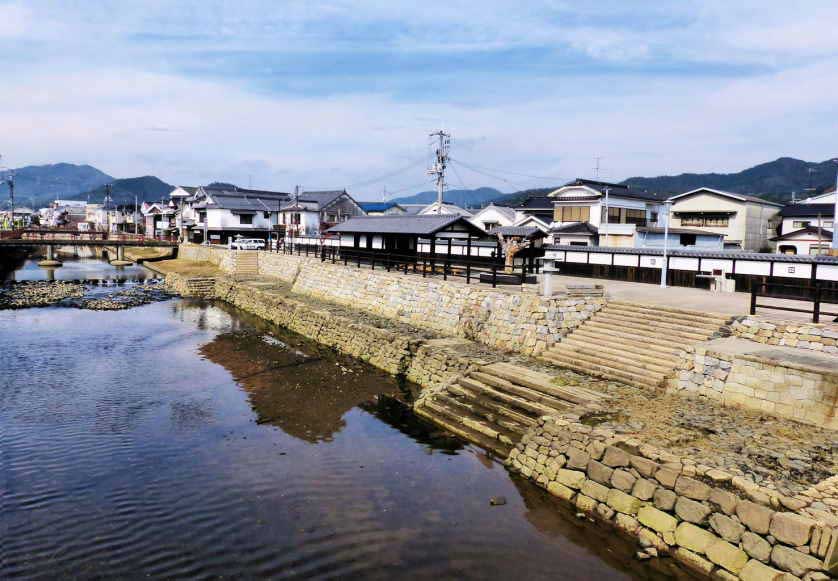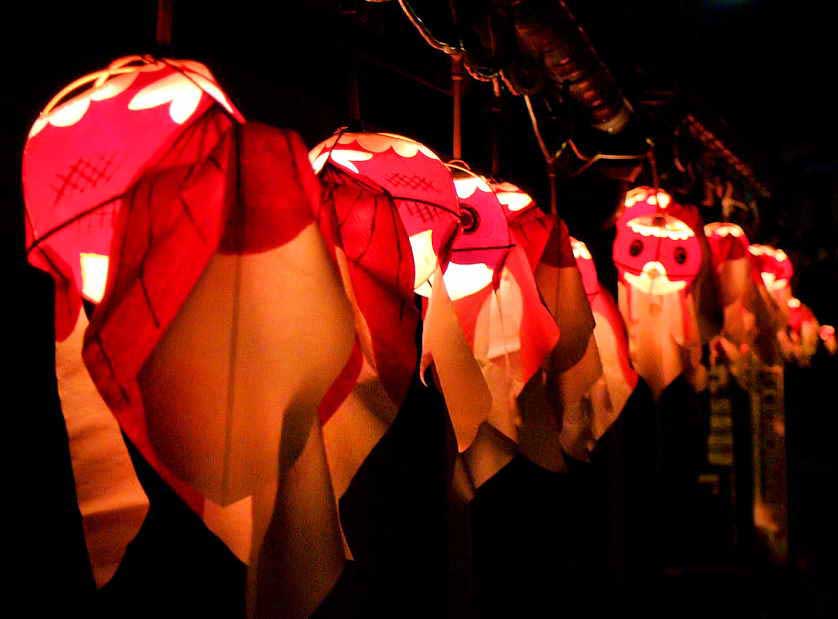Unique Goldfish Lanterns of Yanai 柳井市
 |
| Kingyo Chochin lanterns, unique to Yanai in Yamaguchi Prefecture |
Yanai, a small town in the far western Japanese prefecture of Yamaguchi, is home to unique paper lanterns shaped like goldfish.
Located on the Yanai River a little upstream of where the river empties into the Seto Naikai, the Inland Sea, the tidal river in earlier times was navigable as far as Yanai.
As a result, the town developed and grew as an important port and trading center at a time when the Inland Sea was in essence the most important transportation route in Japan.
 |
| Shirakabe Street in Yanai |
Edo Period Architecture
A large part of the old town has escaped development and remains essentially as it was in the Edo Period. The town, in fact, is registered as a Historical Preservation District, one of only about 120 in the country.
The main street is lined with buildings displaying one of the common features of merchant towns of the Edo period, white-plastered walls.
Called Shirakabe in Japanese, quite a few tourist areas around Japan have "Shirakabe" streets. Like many of the other similar historic districts in Japan, Yanai has a wide range of local history museums, historic "open houses", interesting gift shops and cafes, and a particularly large soy sauce brewery with a museum. However, what distinguishes Yanai from all the others are the unusual paper lanterns hanging everywhere.
 |
| Goldfish lanterns strung above historic buildings in Yanai, Yamaguchi |
Paper Lanterns
Lanterns made of paper are not an unusual sight in Japan. The classic red lantern, akachochin, hanging outside drinking establishments are well known.
Also many shrines and temples feature paper lanterns, also large numbers of them are hung during festivals with night-time activities such as cherry-blossom viewing parties, and most notably during the Obon period in August where the return of the ancestors is celebrated.
However, the lanterns you see in Yanai are unique and are not round or cylindrical, but shaped like goldfish.
 |
| Display of paper lanterns with designs of goldfish during the goldfish lantern festival in Yanai |
Goldfish
Goldfish, kingyo, have been a popular feature of Japanese summer festivals since the Edo Period, with children playing kingyo sukui, scooping up the tiny fish using a kind of paper scoop. Towards the end of the Edo Period a local merchant named Kumatani Rinzaburo had the idea that maybe the town's kids would enjoy lanterns shaped like goldfish.
The lanterns are made in the same way as traditional lanterns, out of paper and thin strips of bamboo, but with the big, dramatic eyes, and drooping tails and fins, the kingyo chochin are just as decorative during the daytime with the lights off.
 |
| Historic streets of Yanai illuminated by unique goldfish lanterns |
Kingyo Chochin Festival
The lanterns can be seen all year round along the streets of the old town with hundreds of them hung from the buildings, and are especially delightful when illuminated after dark, but starting in late July even more of the lanterns start to appear, culminating in the town's Kingyo Chochin Festival on August 13th.
Part of the town's Obon celebrations, both banks of the river have large numbers of lantern displays, as well as along Shirakabe Street.
The highlight of the festival are giant goldfish lanterns on floats pulled by local teams. This is very much an influence of the famous Nebuta Festival of Aomori. Bon dances are held alongside an array of traditional festivals stalls, and the culmination is a large firework display.
 |
| Goldfish lantern display along the river in Yanai |
Purchase a Range of Lanterns from Japan
Purchase a selection of Yanai lanterns from GoodsFromJapan
Jake Davies
Gallery
 |
| In earlier times trading vessels docked at the riverside merchant town of Yanai |
 |
| The goldfish lantern has now become the symbol of Yanai, appearing everywhere, even on manhole covers |
 |
| Goldfish lanterns are strung along a street of historic buildings in Yanai, Yamaguchi |
 |
| Kingyo chochin, a goldfish lantern from Yanai in Yamaguchi |
Related
Daruma Dolls - History & Symbolism
